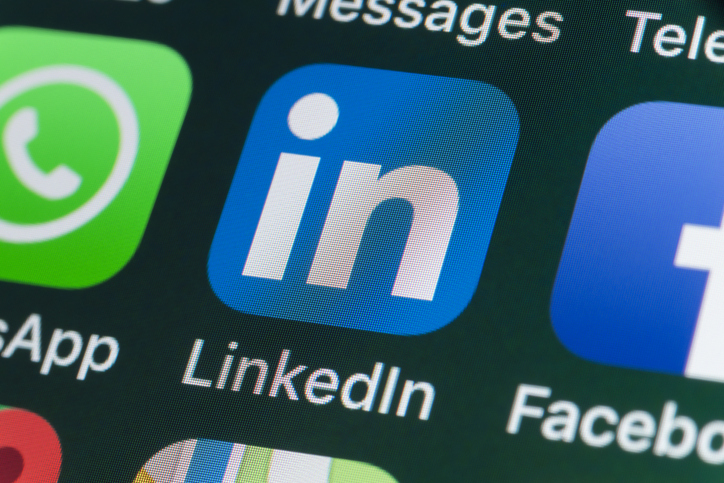
Sales and marketing teams have different goals and objectives. While marketing focuses on building brand awareness, building brand trust, and generating leads, sales is primarily concerned with closing deals and meeting revenue targets. These differing priorities can sometimes lead to conflicts between two departments that should be working together.
When sales targets are not met, it can be common for sales teams in business-to-business companies to accuse marketing of providing low-quality leads. Conversely, B2B marketers will often argue that the sales team didn’t effectively follow up on the leads provided. However, we all know this argument will not stop accusations from coming if the business is not meeting its targets. If you are a B2B marketer, you know that the only way to prevent these accusations is to prove the quality and quantity of the leads you have generated beyond any reasonable doubt. The easiest way to do this is by using LinkedIn Ads.
Hitting the right audiences
As you probably know, LinkedIn is a professional networking platform, which means its user base consists primarily of professionals and business decision-makers. In short, B2B audiences are what makes LinkedIn’s user base unique as a social platform. That user base has now grown to 1 billion people worldwide.
LinkedIn’s ad platform provides extensive targeting options based on job title, industry, company size, seniority, skills, interests, and more. This industry and job-role targeting is far more extensive than any of the other social media platforms offer, as well as any pay-per-click (PPC) platforms such as Google Ads or Bing Ads. As such, LinkedIn ads uniquely allow advertisers to precisely target their ads to reach their ideal audience, increasing the likelihood of generating quality leads.
Making form-fills easy
LinkedIn Ads offers Lead Gen Forms, which allow advertisers to collect lead information directly within the platform, so users need not leave LinkedIn itself. In fact, this process is so streamlined that users will often not have to fill in their details at all—LinkedIn automatically fills in most of the fields, removing what can be a significant barrier on traditional landing pages. LinkedIn also claims that their Lead Gen Forms drive 5x higher conversion than landing pages. The average conversion rate on a landing page is 2.35%, while LinkedIn Lead Gen Forms sit at 13%.
Integration with other tools
LinkedIn ads can be integrated with marketing automation platforms, allowing leads to take the next step down the marketing funnel. A variety of different tools now plug into LinkedIn, including many of the big players in lead nurturing.
HubSpot:
Users can capture leads from LinkedIn Lead Gen Forms directly into their HubSpot account, where they can be automatically enrolled in nurturing campaigns, scored, and managed within the CRM.
Salesforce and Pardot:
Leads generated through LinkedIn ads can be automatically synced with Salesforce, allowing sales teams to track lead activity, prioritise follow-up efforts, and measure the effectiveness of LinkedIn ad campaigns. Meanwhile, Pardot, which is also a Salesforce-owned marketing automation platform, offers integration with LinkedIn ads to help businesses drive lead generation and customer engagement. Leads captured through LinkedIn ads can be imported into Pardot, where they can be nurtured through automated email campaigns and tracked through the sales funnel.
Marketo, Sharpspring and ActiveCampaign:
Like Pardot, leads captured through LinkedIn Lead Gen Forms can be automatically imported into these platforms in a similar way, where they can then be nurtured, scored, and tracked through the sales pipeline.
So, how can you make the most of LinkedIn Ads?
Target the right audiences.
Use the previously mentioned targeting options to develop your own bespoke audience. This allows you to put your ads in front of the decision-makers and the people who influence the decision makers, levelling up the level of leads you gather.
Use creative assets and messaging.
Use a mix of formats like single image ads, carousels, videos, and conversation ads to capture attention and drive conversions through the LinkedIn Feed.
Build brand awareness and trust first.
Before asking for lead form submissions, use your LinkedIn advertising to build brand awareness and establish trust with your target audience through thought leadership content.
Don’t ask for too much info.
Keep your LinkedIn Lead Gen Forms simple by only asking for the essential information. This can usually be kept to:
- Name
- Job title
- Company name
- Email address
Requesting too many fields can lead to friction and abandoned form submissions. LinkedIn themselves suggest no more than 4 fields.
Refresh your lead gen forms and content.
Refreshing your campaigns helps ensure continued engagement and lead generation. By regularly updating Lead Gen Form copy, as well as the content you’re promoting, you can avoid audience fatigue and increase results.
Test and learn.
Consistently A/B testing different targeting parameters, copy, and creative assets will help you learn how to best use LinkedIn Ads for leads. Analysing metrics like conversion rates and cost-per-lead will surface your top performers so you can learn for future campaigns.